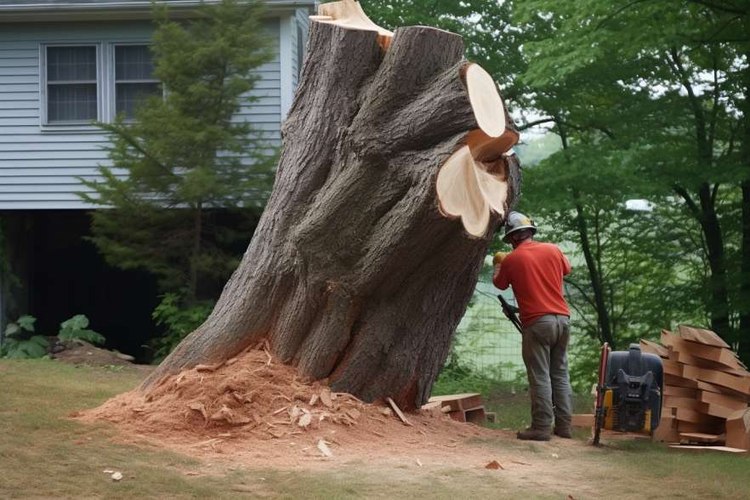What You Need to Know About Tree Cutting Costs
Tree cutting costs can vary significantly based on multiple factors, making it essential to understand what influences pricing before starting your project. Whether you're dealing with a small ornamental tree or a towering oak, professional tree removal involves careful planning, specialized equipment, and expertise that directly impacts the final cost. Understanding these pricing factors helps homeowners make informed decisions and budget appropriately for tree cutting services in their area.

How Tree Size and Height Determine Average Cutting Costs
The size and height of your tree serve as primary cost determinants for professional cutting services. Small trees under 25 feet typically cost less to remove due to minimal equipment requirements and reduced complexity. Medium-sized trees ranging from 25 to 50 feet require more specialized equipment and additional safety measures, increasing labor costs accordingly.
Large trees exceeding 50 feet present the most significant challenges and highest costs. These towering specimens often require crane assistance, multiple crew members, and extended work periods. Tree diameter also influences pricing, as thicker trunks demand more powerful cutting equipment and additional disposal considerations. Professional arborists assess both height and diameter when calculating removal costs, ensuring accurate estimates based on actual tree dimensions.
Location Impact on Tree Cutting Pricing
Geographic location significantly affects tree cutting costs through various regional factors. Urban areas typically command higher prices due to increased property values, stricter regulations, and limited access for equipment. Rural locations may offer lower base rates but could include additional travel fees for service providers.
Proximity to structures, power lines, or property boundaries creates complexity that directly impacts pricing. Trees located near homes require careful dismantling piece by piece, increasing labor time and skill requirements. Access limitations, such as narrow driveways or fenced yards, may necessitate specialized equipment or hand-cutting techniques, both of which increase overall project costs.
Key Equipment and Safety Requirements Affecting Pricing
Professional tree cutting demands specialized equipment that influences service pricing significantly. Basic removals require chainsaws, climbing gear, and safety equipment, while complex jobs may need cranes, bucket trucks, or specialized rigging systems. Equipment rental, maintenance, and operator expertise contribute directly to final pricing structures.
Safety requirements mandated by industry standards and local regulations add necessary costs to professional services. Certified arborists invest in ongoing training, insurance coverage, and safety equipment to protect workers and property. These professional standards ensure quality service delivery but require appropriate compensation reflected in pricing structures.
Disposal Considerations and Additional Cost Factors
Tree disposal represents a significant portion of total cutting costs, varying based on local regulations and available facilities. Some service providers include basic disposal in their base pricing, while others charge separately for hauling and processing removed materials. Wood chipping, stump grinding, and debris removal each carry distinct cost implications.
Additional factors influencing pricing include seasonal demand, emergency services, and permit requirements. Storm damage or urgent removals typically command premium pricing due to immediate response needs. Some locations require permits for tree removal, adding administrative costs and potential delays to project timelines.
| Service Type | Size Range | Cost Estimation |
|---|---|---|
| Small Tree Removal | Under 25 feet | $150 - $500 |
| Medium Tree Removal | 25-50 feet | $500 - $1,200 |
| Large Tree Removal | Over 50 feet | $1,200 - $3,000+ |
| Stump Grinding | Per stump | $75 - $300 |
| Emergency Services | Any size | 25-50% premium |
Prices, rates, or cost estimates mentioned in this article are based on the latest available information but may change over time. Independent research is advised before making financial decisions.
Permits and Professional Qualifications to Consider
Before hiring tree cutting services, verify permit requirements through local municipal offices or homeowners associations. Many communities regulate tree removal, particularly for protected species or trees exceeding specific size thresholds. Permit costs typically range from minimal fees to several hundred dollars, depending on local regulations and tree characteristics.
Professional qualifications ensure safe, legal, and effective tree removal services. Look for certified arborists through the International Society of Arboriculture, proper licensing, and comprehensive insurance coverage. Qualified professionals understand local regulations, safety protocols, and proper cutting techniques that protect both property and surrounding vegetation.
Understanding tree cutting costs involves multiple interconnected factors that professional arborists consider when developing accurate estimates. Size, location, equipment requirements, and disposal needs all contribute to final pricing structures. By researching local permit requirements and verifying professional qualifications, homeowners can make informed decisions that ensure safe, legal, and cost-effective tree removal services for their specific situations.




